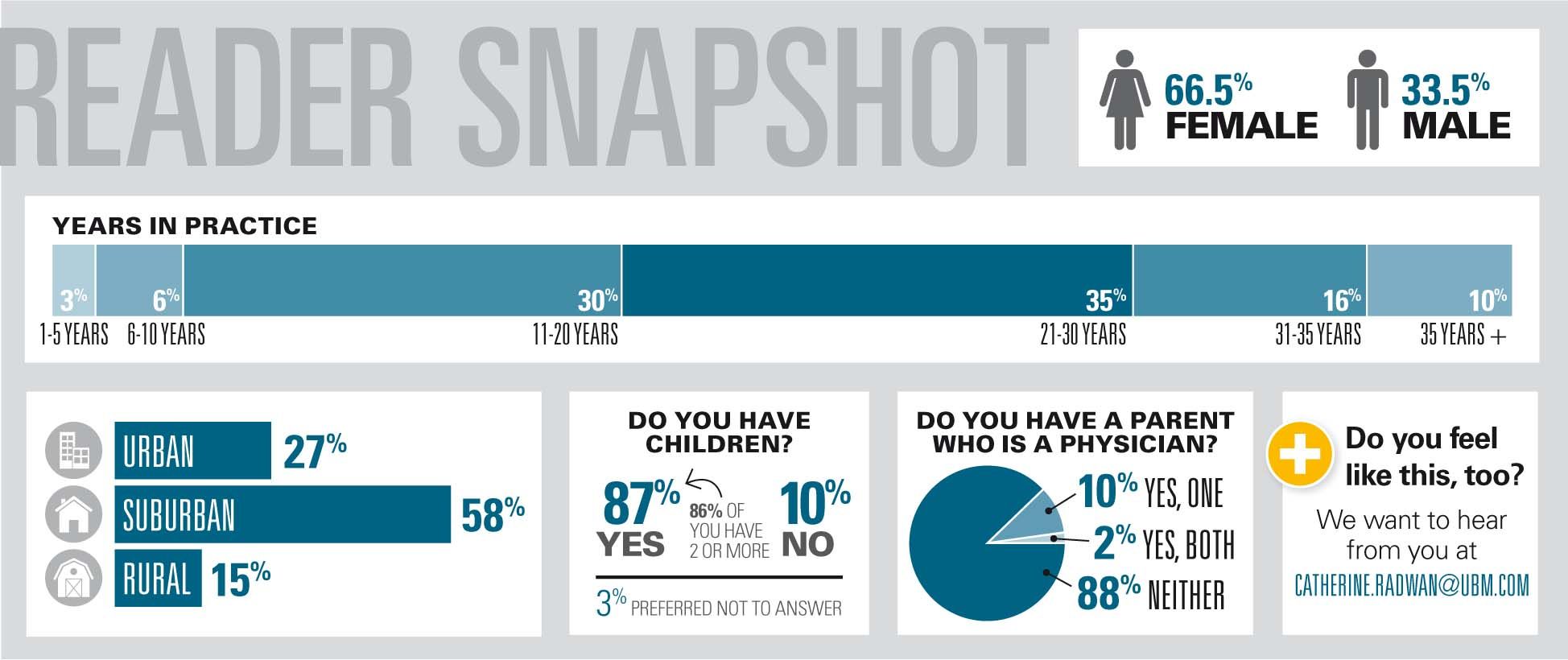8 truths about pediatricians in 2017-and a few fallacies
We’ve been asking the same basic questions in our Annual Issues and Attitudes Survey for the past 4 years and listening to your answers so that we can discern any trends in your thinking and professional behaviors. The jury is in on 2017, so here are some of the key findings. No P values here, but lots of anecdotal comments. And still some interesting feedback on what you’re confronting and juggling from patients, parents, and payments.
We’ve been asking the same basic questions in our Annual Issues and Attitudes Survey for the past 4 years and listening to your answers so that we can discern any trends in your thinking and professional behaviors. The jury is in on 2017, so here are some of the key findings. No P values here, but lots of anecdotal comments. And still some interesting feedback on what you’re confronting and juggling from patients, parents, and payments.

The compensation fallacy
Who says pediatricians are not as passionate about compensation as other physicians? Our survey found that compensation ranked right up there as well. In fact, 67% of you gave compensation a 4 or 5 in importance on a 5-point scale.

NEXT: The oral health crisis fallacy

The oral health crisis fallacy
Is it true that dental care remains one of US children’s most unmet medical needs? According to the Kaiser Commission on Medicaid and the Uninsured, tooth decay is the most common chronic illness among school-age children with about 1 in 4 children having untreated tooth decay. Nearly 44% of survey respondents provide oral care themselves to patients aged younger than 5 years, and of those who do not, nearly 50% don’t because of their confidence that patients are already receiving care at a dentist.

NEXT: The healthcare access fallacy

The healthcare access fallacy
To believe many reports in the media, Medicaid patients are being left to fend for themselves when it comes to their access to care. In fact, almost 87% of you are still accepting new patients who are on the program. That said, your single biggest fear about any new healthcare law is what its impact will be on Medicaid (46.2%).
Having your say: “My practice is the largest provider for Medicaid in our state. There has always been healthcare for poor children.”

NEXT: The big hospital takeover fallacy

The big hospital takeover fallacy
The number of physician practices owned by hospitals has increased 86% over the past 4 years, which also resulted in a 50% rise in the number of physicians employed by hospitals, according to a 2016 study. (Avalere Health; 2016.) Given that, perhaps many pediatricians who were going to make the leap from private practice to employee status with a hospital or other organization have already done so. Our survey shows that fewer than 12% of you have plans to become an employee in 2018. Over 88% of you intend to stay put-even though almost 43% believe that the current healthcare environment isn’t conducive to entrepreneurs.


Anger hurts your team’s performance and health, and yours too
October 25th 2024Anger in health care affects both patients and professionals with rising violence and negative health outcomes, but understanding its triggers and applying de-escalation techniques can help manage this pervasive issue.